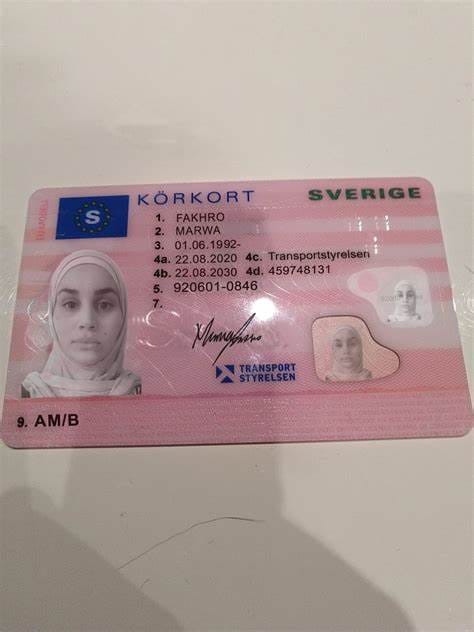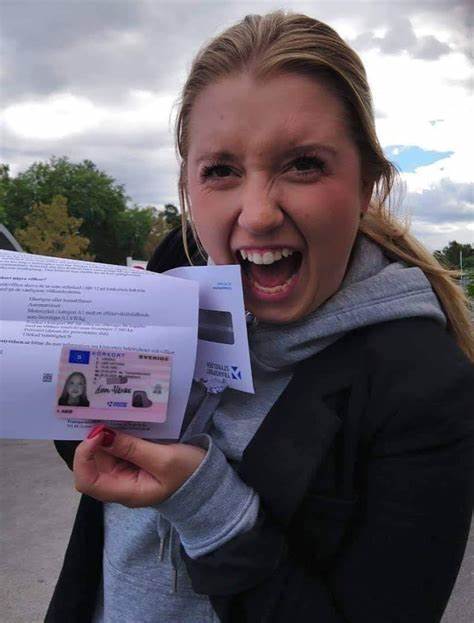20 Tools That Will Make You Better At Buy A1 Driving License
페이지 정보

본문

The Comprehensive Guide to Legally Obtaining a Driving License
Driving is a basic skill for numerous, offering the flexibility to travel where and when you want, typically making life more convenient and pleasurable. Nevertheless, obtaining a driving license is a procedure that needs understanding, persistence, and adherence to legal procedures. This guide aims to offer an in-depth summary of the steps one need to follow to legally acquire a driving license, highlighting crucial considerations and regularly asked concerns to guarantee a smooth and hassle-free experience.
Understanding the Basics
Before diving into the application procedure, it's essential to comprehend the basic requirements and types of driving licenses readily available. Driving laws differ significantly from nation to country, and even within different states or provinces within the same nation. Typically, there are numerous types of driving licenses, consisting of:
- Learner's Permit: This is typically the primary step in the procedure, enabling new chauffeurs to acquire experience under guidance.
- Provisionary License: Issued after passing a basic driving test, this license normally features limitations and is a stepping stone to a complete license.
- Complete Driver's License: Once all the required requirements are fulfilled, motorists can obtain a full license, which uses total driving benefits.
- Industrial Driver's License (CDL): Required for those who want to run commercial cars, such as trucks or buses.
Steps to Obtain a Driving License
1. Research Study Local Driving Laws
The very first step in getting a driving license is to look into the particular requirements in your location. Visit the main site of your regional Department of Motor Vehicles (DMV) or equivalent agency to discover comprehensive details about the licensing process, including age limitations, required files, and charges.
2. Prepare Required Documentation
Each jurisdiction has its own set of documents that need to be sent to get a driving license. Typically needed documents consist of:
- Proof of Identity: A passport, birth certificate, or state-issued ID.
- Proof of Residency: Utility costs, lease arrangements, or other main documents that verify your address.
- Social Security Number (if relevant): In some nations, a social security number or equivalent is required for recognition.
- Vision Test Results: Some places need a vision test before releasing a student's permit or license.
3. Take a Driver's Education Course
Numerous states and countries require new drivers to finish a driver's education course. These courses are created to teach the guidelines of the roadway, traffic laws, and safe driving practices. They can be completed KöPa A1 Körkort Online or in a class setting and typically consist of both theoretical and practical parts.
4. Use for a Learner's Permit
When the needed paperwork is all set and the driver's education course is finished, the next step is to request a learner's authorization. This generally includes checking out the DMV or sending an application online. You will likewise need to pass a written test that covers traffic laws and driving knowledge.
5. Practice Driving
With a learner's authorization, you can start practicing driving under the supervision of a licensed grownup. This is a crucial action in building your confidence and skills behind the wheel. It's also essential to acquire experience in various driving conditions, such as night driving, highway driving, and driving in severe weather condition.
6. Schedule and Pass the Driving Test
After gaining adequate driving experience, you can set up a driving test with the DMV. The test will examine your capability to securely run an automobile and follow traffic laws. You will require to bring an appropriately registered and insured car to the test, and the inspector will assess your driving abilities on a predetermined route.
7. Look for a Provisional License
If you pass the driving test, you will normally get a provisionary license. This license may include constraints, such as a curfew or a limitation on the variety of guests you can have in the lorry. These constraints are created to reduce the risk of mishaps and assist new motorists acclimate to the roadway.
8. Update to a Full License
As soon as you have held a provisionary license for the necessary duration and satisfied any additional requirements, you can update to a complete driver's license. This procedure usually includes an easy application and might need a retest or additional documents.
Tips for a Successful Application
- Start Early: Begin the process as soon as you satisfy the age requirement to give yourself ample time to prepare.
- Stay Informed: Keep up-to-date with any modifications in driving laws or DMV treatments.
- Practice Regularly: Consistent practice is essential to developing self-confidence and improving your driving abilities.
- Stay Calm During the Test: Anxiety can impact your performance, so take deep breaths and stay focused.
- Follow DMV Instructions: Pay attention to the guidelines offered by the DMV and the examiner throughout your test.
Often Asked Questions (FAQs)
Q: What is the minimum age to make an application for a learner's permit?
A: The minimum age differs by jurisdiction. In the United States, it usually varies from 15 to 16 years of ages. In the UK, the minimum age is 17. Inspect your local DMV site for particular information.
Q: Can I get a driver's license online?
A: Some jurisdictions enable you to finish parts of the application process online, such as filling out forms and scheduling tests. Nevertheless, you will normally need to visit a DMV workplace in individual to send needed documents and take the driving test.
Q: What takes place if I fail the driving test?
A: If you fail the driving test, you can normally retake it after a particular period. This duration varies by area, however it is frequently a few weeks. It's a great concept to practice more before retaking the test to enhance your opportunities of success.
Q: Can I drive alone with a learner's authorization?
A: No, a learner's permit generally needs you to be accompanied by a licensed grownup, normally over 21 years of ages, who is seated in the front guest seat.
Q: Is a vision test needed to get a driving license?
A: Yes, many jurisdictions need a vision test to make sure that you can safely run a vehicle. You can typically take this test at the DMV or with an approved eye doctor.
Q: How long does it require to get a complete driver's license?
A: The time required to get a complete driver's license varies depending upon your jurisdiction and the particular steps involved. Generally, it can take a number of months, including the time needed to complete a driver's education course, hold a student's authorization, and pass the driving test.
Q: Can I utilize a provisionary license to drive for work?
A: It depends upon the restrictions put on your provisionary license. Some provisional licenses enable you to drive for work, while others may have particular constraints. Examine your license for details or call the DMV for clarification.
Q: What is the difference in between a learner's authorization and a provisional license?
A: A learner's authorization is the first phase of the licensing process and allows you to drive only under supervision. A provisional license, on the other hand, grants you more driving benefits but might still have some limitations, such as a curfew or traveler limitations.
Q: Can I look for an industrial driver's license (CDL) without a complete driver's license?
A: No, you normally require a full driver's license before using for a CDL. A CDL is a specialized license that needs additional training and testing, and it is just provided to those who have actually demonstrated the capability to safely run a standard car.

Q: What should I do if I lose my driving license?
A: If you lose your driving license, you ought to report it to the DMV and request a replacement. You may need to offer proof of identity and pay a charge. It's likewise a great idea to alert your insurance provider and any other appropriate parties.
Getting a driving license is a considerable turning point that opens new chances and increases independence. By following the steps outlined in this guide and staying informed about local laws and requirements, you can ensure a smoother and more successful licensing process. Keep in mind that driving is a serious responsibility, and taking the time to discover and practice is necessary for your security and the safety of others on the road.
- 이전글The Most Overlooked Solution For High Stakes Sweeps 25.07.09
- 다음글Top Places to Find Cricket Webs in Dubai 25.07.09
댓글목록
등록된 댓글이 없습니다.

